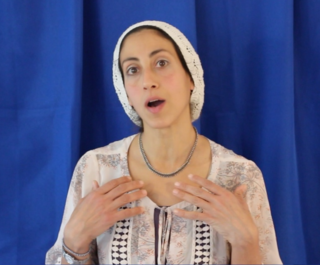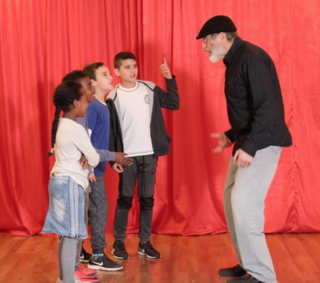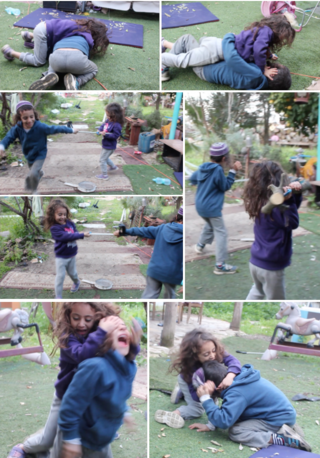Bullying
Teaching in the Age of Antibullyism
My daughter experienced the new dangers facing educators firsthand.
Posted March 23, 2020 Reviewed by Matt Huston

My firstborn, Lola, has been an elementary school art teacher for the past couple of years here in Israel. She has discovered the hard way how antibullyism has affected both the teaching profession and the mentality of today's youth. She documented her experience in a detailed and thoughtful article called "The Miseducation of Most Kids Today." Here is an excerpt:
I knew about the dissonance between my (a.k.a. my father’s) outlook and the modern-day reality of schools before the Talia incident. What it really brought home for me is how deeply the students have internalized these expectations of the teacher. I had always assumed that students grudgingly accepted the intervention of teachers as a fact of life. Now I know that they expect and welcome it. And this is the saddest part of all: these children don’t believe they have the tools to face their “bullies” on their own. They think that unkind behavior warrants punishment; they’re under the illusion that the solution to conflicts lies outside of themselves. They’ve never been taught that the best solution to another’s unkindness is kindness in return.
I encourage you to read the entire article, but first some background.
One of the most difficult of all professions is teaching, especially in lower education. An adult is presented with a group of strangers’ children, as many as 30 or more, and must get them to sit in class all day long doing lessons imposed upon them, when they would rather be playing, having adventures, and creating social dramas–essentially dancing to the beat of their own drum. It is not accidental that the Pink Floyd song that goes We don’t need no education became an instant classic.

Most of my career has been in schools, but I took the easy path of psychologist–mostly administering testing and counseling with individual students, writing up reports at my leisure, and participating in meetings. With the rare exception of seriously disturbed kids, there were no discipline problems to handle. With no lesson plans to prepare or tests to grade in the evening, my life after school hours was my own. I had no envy of the job of teacher.
I did a great deal of classroom observation. I noticed that the teachers who expended the most energy, experienced the most frustration, and accomplished the least amount of academic teaching were those who took on the responsibility of managing the social complaints of their students. Their students quickly discovered that they could get them to spend half of their class time conducting investigations, pronouncing verdicts, and sending guilty parties to the principal’s office. These teachers didn’t realize that they were unwittingly intensifying the hostilities between the students, causing them to fight endlessly, and actually preventing them from figuring out how to solve their social problems on their own. They didn’t realize that they were adding to the principal’s stress as well. Perhaps most significantly, they didn’t realize that they might be harming certain kids, those who always seem guilty and therefore in need of time in the office. In addition to missing out on precious classwork, they come to hate school and therefore feel justified causing problems again.
It’s the same process that happens in the home. With the possible exception of those with a seriously disturbed or impaired child, the families in which siblings are most likely to engage in constant and passionate fighting are those in which the parents take it upon themselves to protect their children from each other.
This process is not new to psychology. It is often referred to as triangulation. When we get involved trying to rescue an apparent victim by taking their side against an apparent persecutor in the ordinary, non-criminal hostilities of everyday life, we are likely to make the situation worse. Each side insists they are the victim and the other is the persecutor, so the hostility between them increases. The one we deem to be the persecutor becomes hostile toward us as well, and wants revenge against both us and the alleged victim, so a worse act is likely to follow. The alleged victim, happy to have gotten us to take their side and thereby validate their conviction of righteousness, is likely to provoke their persecutor again so that we will again step in to save them. Ultimately, rather than empower them to solve their problems on their own, we unwittingly foster dependence on us.
Before long, I found myself guiding teachers to step out of the roles of policeman and judge, and instead empower students to quickly resolve their social issues on their own. Many teachers were immensely grateful. Their jobs became easier, they got more teaching done, and their students grew in maturity.1
Therefore, I was shocked by the anti-bullying policies that were imposed upon schools in the aftermath of the Columbine massacre of 1999, the event that sparked the twenty-first-century war against bullying. Educators were now being required to triangulate, to take the side of victims against persecutors, now labeled “bullies.” Weren't the psychologists who advocated for these policies also aware of the dangers of triangulation? And why in heavens weren’t teachers and their unions complaining? Didn't they realize that these policies would make their jobs even more difficult while intensifying the very bullying problem they were intended to solve?
Apparently, the answers to these questions were “No.” Antibullyism’s impossible promise of a life without harassment is as irresistible as the song of the Sirens to ancient mariners, blinding even professionals to the hazards in plain sight.

Lola, who has been helping me produce my materials on bullying for almost 20 years, ever since she was a teenager, knows my ideas as well as anyone. Seeing how nicely they have worked in her own life, she expected to incorporate them on the job so the students would be able to manage their own social lives and she'd be able to spend her time teaching art. Unfortunately, antibullyism has eroded this option.
For the full story of Lola’s ordeal and the insights she gained, read The Miseducation of Most Kids Today.
1 The following manual has been available for free for two decades, instructing both teachers and parents how they unwittingly increase the aggression between kids, and how to reduce it with little effort:
A Revolutionary Guide to Reducing Aggression Between Children




